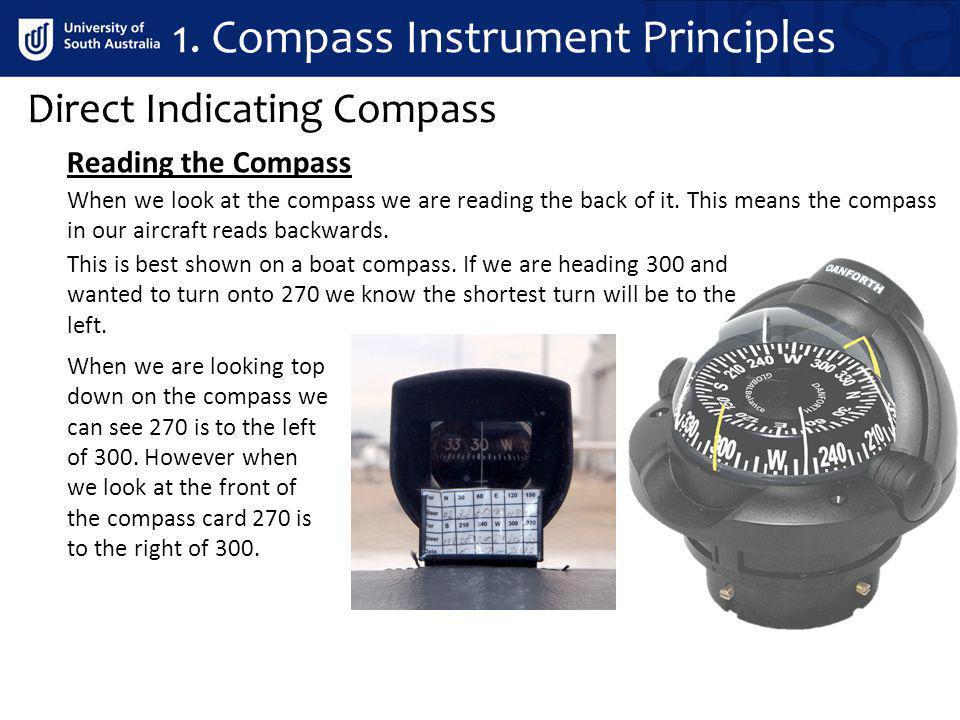Introduction
 To understand aircraft compasses, their strengths and weaknesses we need to look into the subject a little deeper. The first thing you need to understand is the shape of the magnetic field around a magnet. An experiment at school with a magnet and iron filings, will produce a pattern similar to that shown
To understand aircraft compasses, their strengths and weaknesses we need to look into the subject a little deeper. The first thing you need to understand is the shape of the magnetic field around a magnet. An experiment at school with a magnet and iron filings, will produce a pattern similar to that shown
The lines of force are only parallel to the surface of the Earth at the Equator. Indeed, at the poles the lines of force are vertical, this means that a compass needle will try to follow the lines of force but is restrained by the construction of the compass and is forced to stay horizontal. The end result of this is that the directional force that makes the compass needle point North gets weaker the closer you get to the Earth’s Magnetic Poles. At our latitude, the lines of force point down at an angle (known as the angle of Dip) of 65°; once the angle exceeds 75° (which occurs about 1200 miles from the Poles) the driving force becomes so weak as to make magnetic compasses virtually useless.
In an aircraft, the simplest form of compass is the direct indicating compass.
The Direct Indicating Compass (DIC)
 Like a hand held compass, has a magnet suspended in a thick liquid, which helps to dampen the movements. However, it looks very different, having the appearance of a squash ball inside a very small goldfish bowl. The points of the compass are printed around the equator of the ball and the heading is shown against the index mark on the bowl. The magnet is hidden inside the ball.
Like a hand held compass, has a magnet suspended in a thick liquid, which helps to dampen the movements. However, it looks very different, having the appearance of a squash ball inside a very small goldfish bowl. The points of the compass are printed around the equator of the ball and the heading is shown against the index mark on the bowl. The magnet is hidden inside the ball.
Limitations of the DIC
The DIC has several limitations, so in most aircraft it is only used as a standby. These limitations are:
- The suspended magnet will only give a correct reading in straight and level un-accelerated flight. During turns and accelerations the magnet is swung to one side and thus gives false readings.
- The DIC is located in the cockpit, and therefore it is affected by the magnetic fields emanating from the metal the aircraft is made from and from the various electrical circuits in the aircraft. These other magnetic fields badly affect the accuracy of the DIC.
- The driving power of the Earth’s magnetic field is only strong enough to turn a compass needle; it has not got sufficient torque to repeat the heading to other crew positions in the aircraft.
- The DIC only indicates magnetic heading, modern aircraft require True or Grid headings.
- At high magnetic latitudes (above about 70° North or South) the DIC becomes very sluggish and unreliable because the directional force is so weak.
Advantages of the DIC
The DIC does however, have three significant advantages:
- It is very simple and therefore reliable
- It is very cheap and lightweight
- It does not require any form of power and so will continue to work even after a total power failure in the aircraft.
